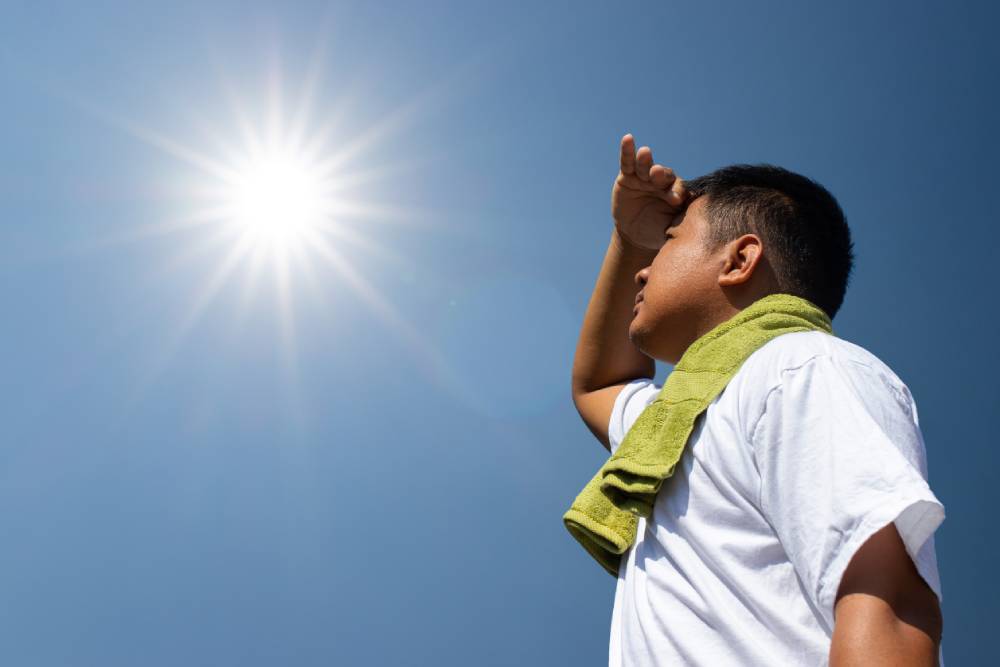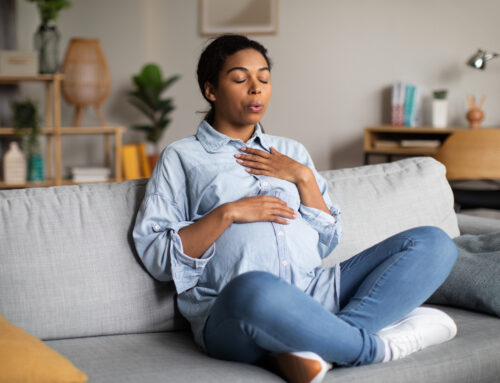
What Is Heat Exhaustion?
Heat exhaustion occurs when the body is unable to regulate its own internal temperature, causing it to become too hot. This usually goes hand in hand with dehydration and results in a range of unpleasant symptoms of varying intensity. Heat exhaustion can also lead to a heatstroke and other complications if not treated quickly.
How Long Does Heat Exhaustion Last?
Heat exhaustion can be persistent and progressively worsen over time if not treated, but, fortunately, the right treatment should begin to provide relief within 15 minutes, even though complete recovery may take up to a few days.
Are There Any Long-Term Effects of Heat Exhaustion?
Providing it is treated promptly and correctly and doesn’t develop into heatstroke, heat exhaustion is unlikely to have any long-term effects. The affected person is likely to be more sensitive to high temperatures for around a week after recovery. As a result of this, it is recommended that they minimize or avoid intense exercise and exposure to hot weather during this time to ensure there are no further issues.
What Are the Causes of Heat Exhaustion?
One of the significant causes of heat exhaustion is simply excessive exposure to hot weather, although this often goes hand in hand with other factors. In particular, the combination of exercise or other physical activity and hot weather is the primary driver in most cases. Higher humidity levels also contribute as they limit the body’s ability to cool itself by sweating.
Other Risk Factors
People under the age of 4 or over 75 are more likely to be affected by heat exhaustion. Certain medical or lifestyle factors also increase the risk of the condition developing. In particular, the use of tobacco, alcohol, or drugs increases the risk, as do certain medications and health conditions.
Condition in the liver, kidney, and heart, high blood pressure, and diseases that increase the risk of dehydration, such as hyperglycemia and diabetes, also increase the risk of heat stroke.
How Do I Know If I Have Heat Exhaustion?
The symptoms of heat exhaustion may present differently in different people and at different times, but some of the most common include headaches, dizziness, and irritability. Other symptoms can include intense thirst, heavy sweating or cool, clammy skin, an increased body temperature, and weakness or cramping in the muscles.
These symptoms are sometimes associated with other conditions, but when combined with the environmental factors associated with heat exhaustion, such as exposure to hot weather, that is the likely cause.
Recognizing Heat Exhaustion in Children
Children, especially those aged under 4, are at a higher risk for heat exhaustion. While the symptoms are largely the same as with adults, they may be unable to identify or communicate them as easily.
It is essential to be aware of the risk of heat exhaustion in young children and to treat them immediately if they are affected. Some easy-to-recognize signs include substantially increased thirst, excessive tiredness, cool, clammy skin, and cramps in the stomach or legs.
What is the Difference Between Heat Exhaustion and Heatstroke
Heatstroke is less common and can result from untreated heat exhaustion. Both have similar symptoms, but heatstroke is much more severe and potentially life-threatening. Significant confusion, slurred speech, and losing consciousness can also indicate that it is heatstroke rather than merely heat exhaustion.
Although attempting to help the affected person cool down and lower their body temperature is still recommended, you should also seek professional medical treatment immediately if you suspect heatstroke.
How Can I Minimize the Risk of Heat Exhaustion?
Although heat exhaustion is a relatively common condition, the chances of you or your family being affected can be massively reduced by following just a few simple steps. As you may expect, given the fact that heat exhaustion results from heat’s effects on the body, these largely center around keeping cool and ensuring your body can naturally regulate its own temperature.
Reducing Heat Exposure
The simplest way to reduce your risk is to reduce your exposure to hot weather. However, if you are going to be outdoors in hot weather, you should wear cool, light-colored clothing with a loose fit and a hat with a brim that can provide shade. Sunscreen with an SPF of at least 30 should also be worn.
Staying Hydrated
You should also ensure that you consume plenty of fluids to avoid dehydration and allow your body to regulate its internal temperature. Drinks containing caffeine and alcohol should be avoided as they have a diuretic effect and therefore increase the risk of dehydration.
Managing Physical Activity
Excessive physical exertion, such as intense or prolonged exercise, should also be avoided during hotter periods. Exercise should be performed in as cool a location if possible and ideally kept to the morning and evening when the temperature is naturally cooler if an air-conditioned room is unavailable.
How Should I Treat Heat Exhaustion?
If you or someone else is experiencing signs of heat exhaustion, you should act quickly to prevent the problem from worsening.
Move to a Cooler Area
The first thing you should do is to move the affected person out of the heat and allow them to rest in a cool environment. An air-conditioned room would be ideal, but if this isn’t available, a shaded area will suffice.
Take Additional Steps to Help Them Cool Down
Once this is done, any unnecessary clothing should be removed, including footwear. Tight clothing, in particular, can trap heat and so should be removed if possible. Washing with cold water can also help the person bring their temperature back down. This could take the form of a cold shower, or it could simply be cold sponges or clothes on the skin.
Help Them Rehydrate
The affected person should also be given liquids to drink and be encouraged to take small sips often. This will fight dehydration and increase the body’s ability to regulate its own temperature again. Again, drinks containing caffeine and alcohol should be avoided as they can lead to further loss of fluids.
If There’s No Improvement or You’re Still Concerned
If the person’s symptoms persist and there is no improvement within fifteen minutes of them receiving treatment, then it’s important to seek further medical assistance to prevent their condition from worsening into heatstroke.
If you’re concerned about yourself or a family member who appears to be suffering from heat exhaustion or another medical issue, you can contact a specialist through TopLine MD for further advice and guidance.



